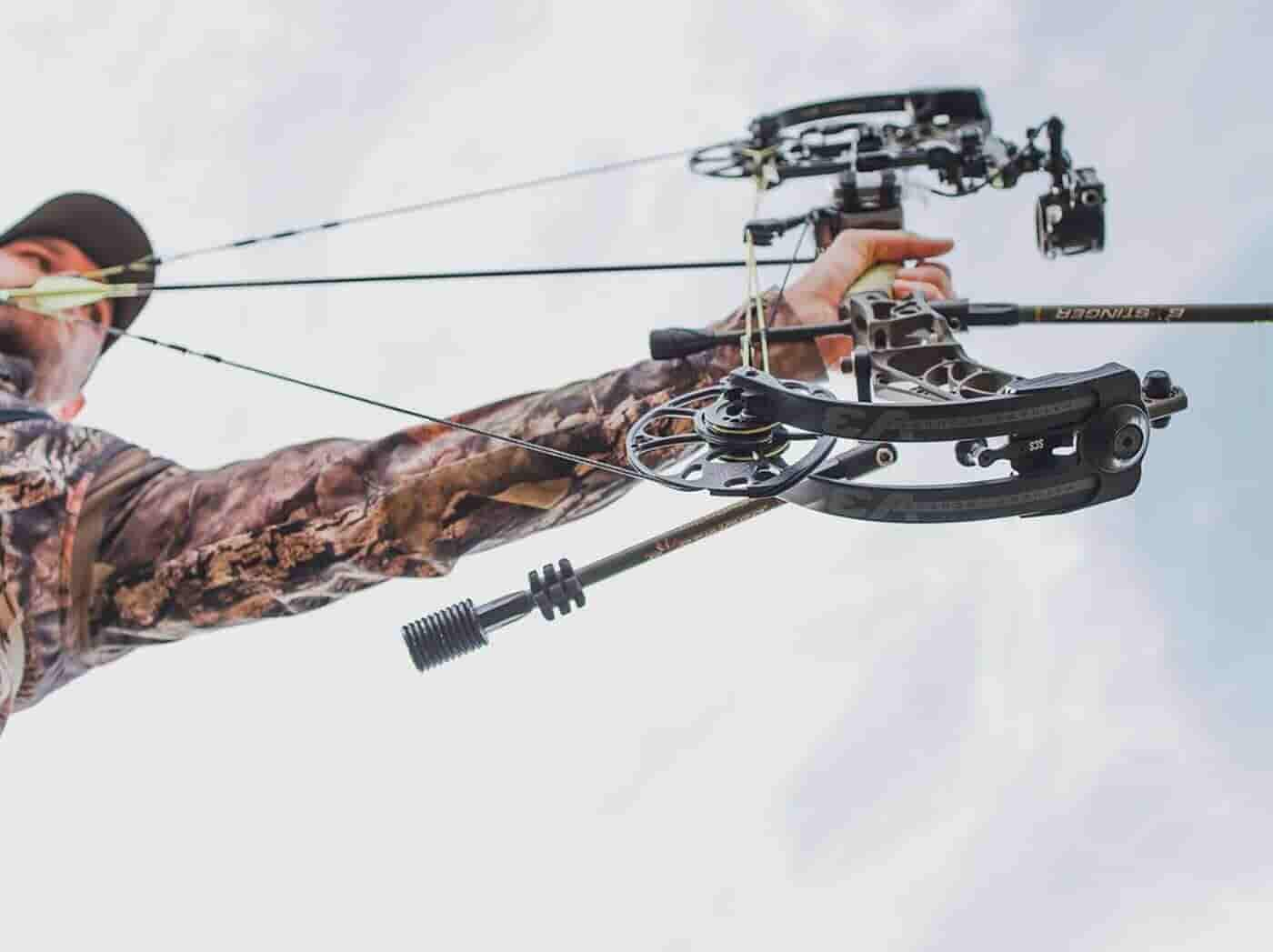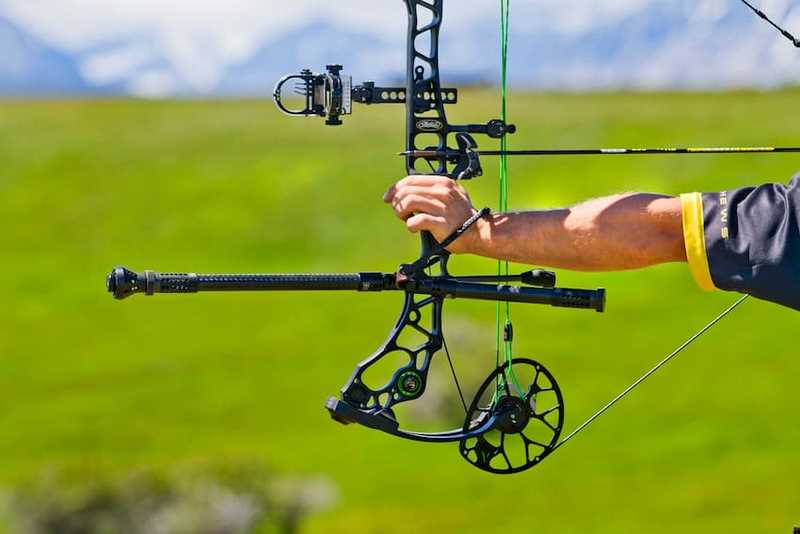Master the Art of Archery: Recognizing the Relevance of a Stabilizer in Your Setup
Whether one is a seasoned archer or just beginning their journey, the relevance of a stabilizer in their setup can not be overemphasized. By recognizing the advantages of making use of a stabilizer, taking into consideration the ideal aspects when choosing one, and properly installing and readjusting it, archers can boost their abilities to brand-new heights.
The Role of a Stabilizer in Archery
A stabilizer plays a vital duty in archery by boosting balance and minimizing vibrations throughout the shot. A stabilizer assists to counteract these vibrations by soaking up and dissipating the energy (archery stabilizer).
Among the primary benefits of a stabilizer is its capability to improve balance. When an archer holds a bow, it can be testing to maintain a constant goal. The weight of the stabilizer helps to distribute the weight equally, lowering the stress on the archer's arm and enhancing security. This permits the archer to concentrate on their purpose and execute a more exact shot.
In addition to balance, a stabilizer additionally helps to reduce torque. The weight and style of a stabilizer combat this rotation, guaranteeing a more precise and consistent shot.
Advantages of Utilizing a Stabilizer
The application of a stabilizer in archery offers numerous advantages that enhance an archer's performance and overall capturing experience. By soaking up and moistening these vibrations, the stabilizer improves the stability of the bow, enabling for more constant and exact shots.
Secondly, a stabilizer helps to balance the bow by adding weight to the front end. This weight distribution counteracts the all-natural propensity of the acquiesce tip ahead upon launch, minimizing the quantity of motion and boosting the archer's ability to preserve goal on target.

Last but not least, a stabilizer can also work as a shock absorber, lowering the shock and recoil experienced upon launch. This not just boosts the convenience of capturing however also minimizes the risk of injury or pressure on the archer's body.
Just How a Stabilizer Boosts Precision
Enhancing the precision of an archer's shots, a stabilizer plays a crucial role in enhancing total efficiency. archery stabilizer. By including stability to the bow, a stabilizer aids minimize the undesirable activity and vibration that can happen throughout a shot. This decrease in activity enables the archer to keep a stable aim, leading to even more accurate and regular shots

In addition, a stabilizer helps to dampen resonances that happen upon release. These vibrations can trigger the bow to tremble, affecting the arrowhead's trajectory and precision. By absorbing and dissipating these resonances, a stabilizer helps to keep the bow's stability and ensure a precise and smooth shot.
In addition, a stabilizer can additionally aid in balancing the weight circulation of the bow (archery stabilizer). By including weight to the front of the bow, a stabilizer aids to stabilize the weight of devices, such as quivers or views, which may be affixed to the bow. This well balanced weight circulation assists the archer maintain a controlled and steady capturing placement, leading to enhanced precision
Elements to Consider When Selecting a Stabilizer
When selecting a stabilizer for your bow, it is essential to think about a number of aspects that will contribute to its general effectiveness and suitability for your private capturing style. The first factor to think about is the size of the stabilizer.
An additional element to consider is the weight of the stabilizer. The weight of the stabilizer can impact the equilibrium of your bow. A heavier stabilizer can help to boost and reduce resonances security, causing a steadier shot. Nevertheless, a lighter stabilizer may be liked by shooters who prioritize maneuverability and speed.
In addition, it is essential to take into consideration the design and building and construction of the stabilizer. Some stabilizers have flexible attributes, such as flexible length or adjustable weights, which enable you to personalize the stabilizer to your details requirements. The materials made use of in the construction of the stabilizer can also affect its efficiency. Carbon fiber stabilizers are lightweight and resilient, while aluminum stabilizers offer an equilibrium in between weight and rigidness.
Finally, it is necessary to consider your capturing design and choices. Various stabilizers might function far better for certain shooting designs, such as target capturing or searching. It is suggested look these up to speak with knowledgeable archers or experts to figure out which stabilizer will best match your specific requirements. In general, considering these factors will certainly aid make certain that you pick a stabilizer that boosts your capturing experience and enhances your precision.
Tips for Appropriately Adjusting a stabilizer and setting up
Appropriate setup and change of a stabilizer is vital for maximizing its efficiency and making sure optimal shooting accuracy. When mounting a stabilizer, it is important to adhere to a few key actions to ensure its efficiency. Determine the appropriate size of the stabilizer based on your shooting style and preferences. Longer stabilizers give more stability yet can be less manoeuvrable, while shorter stabilizers use raised maneuverability yet might give up security. As soon as you have actually picked the appropriate length, attach the stabilizer to the bow using the offered installing equipment. Guarantee that the stabilizer is firmly attached and lined up with the bow's riser.
After setting up the stabilizer, it is required to make changes to attain the wanted equilibrium and shot consistency. Beginning by changing the weight circulation along the stabilizer. In addition, consider readjusting the angle of the stabilizer to tweak the shot.

Final Thought
In conclusion, a stabilizer plays a critical duty in archery by enhancing precision and minimizing bow torque. By adding weight to the bow, it helps to support the shot and stabilize. When selecting a stabilizer, factors such as product, home weight, and length should be thought about to satisfy specific needs. Correct installment and change of the stabilizer are additionally essential for ideal efficiency. Understanding making use of a stabilizer can greatly boost the archer's skill and accuracy.
In addition, a stabilizer can also assist in balancing the weight circulation of the bow. By adding weight to the front of the bow, a stabilizer helps to balance the weight of accessories, such as quivers or sights, which may be attached to the bow. Some stabilizers have adjustable features, such as adjustable length or adjustable weights, which permit you to tailor the stabilizer to your specific requirements. Carbon fiber stabilizers are light-weight and long lasting, while light weight aluminum stabilizers supply a balance in between weight and rigidity.
Longer stabilizers provide more security however can be check over here less manoeuvrable, while shorter stabilizers provide enhanced maneuverability but may compromise stability.